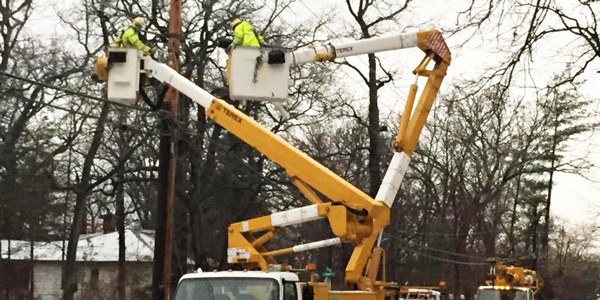By Amanda Durish Cook
CARMEL, Ind. — MISO expects to easily manage this winter’s anticipated 103.4 GW of peak demand with an estimated 142 GW of available capacity, stakeholders recently learned during a trio of meetings focusing on winter preparedness.
“We certainly can’t be complacent. … In winter, just like in every season, we have to be ready for anything thrown at us, but we’re prepared,” MISO Executive Vice President of Operations Richard Doying said during a Nov. 6 winter readiness workshop.
Using National Oceanic and Atmospheric Administration projections, MISO predicts this winter will be warmer than normal in its Central and South regions, while temperatures in the North region will be normal to below normal.
Darius Monson of MISO’s resource adequacy coordination group said the RTO’s winter reserve margin is expected to vary between 28.3 and 37.3% without factoring in outages.
“That’s a fairly good position to be in,” Doying said.
However, the reserve margin could range from 6.7 to 19.3% after taking possible outages into account, Monson said, compared with this year’s footprint-wide 15.8% planning reserve margin requirement. The RTO used historical outage data to predict winter outage levels anywhere from the more probable 23.3 GW, to 28.7 GW in a high load, extreme outage scenario. MISO might need to rely on behind-the-meter generation and demand response resources to meet peak demand under that scenario, Monson said.
The RTO does not predict any major constraints or thermal and voltage issues during the winter.
Engineer Katherine Hulet said MISO did not uncover any potential issues through its biannual Coordinated Seasonal Assessment. The study evaluates a variety of stressed conditions across the MISO footprint and identifies potential limitations and issues on the system for the upcoming winter.
Hulet said the RTO studied possible transmission contingencies, potential transfer contingencies, voltage stability and possible phase angle differences, but found no cause for concern.
“It really looks like MISO’s in pretty good shape. Not only are there capacity resources, but the transmission is in a position do well,” Reliability Subcommittee Chair Tony Jankowski said during a Nov. 2 conference call.
Jankowski asked if MISO is considering performing seasonal studies for shoulder periods. Hulet said seasonal studies will continue to be limited to summer and winter.
Jankowski urged operators to ensure all generators are in good repair. “Eventually that arctic air will make it into our footprint,” he warned.
Doying also said MISO is well-positioned for winter reliance on natural gas.
“We have access to just about all pipeline interconnections. Actually, most of the gas storage in the country is located within MISO,” Doying said during an Oct. 31 Markets Committee of the Board of Directors conference call. The RTO expects gas storage inventories nationwide to peak at 3.8 Tcf this winter, slightly below the five-year average, and prices to continue hovering around $3/MMBtu into winter.
Independent Market Monitor David Patton said MISO’s proximity to gas storage makes it easier to quickly ensure fuel supplies if a pipeline goes down, whereas the New England region doesn’t have such supply backups, requiring more Northeast generators to have dual-fuel capability.
“We’re ready until the next polar vortex presents a whole new realm of challenges,” MISO Chairman Paul Bonavia remarked jokingly.




